The Timeless Elegance of Kanjivaram Silk Sarees: A Cultural Icon in Temples
In the vibrant tapestry of Indian textiles, few fabrics stand out as prominently as the Kanjivaram silk saree. Renowned for its exquisite craftsmanship and luxurious feel, the Kanjivaram saree has long been an emblem of cultural heritage and sophistication. While these sarees are celebrated in various settings, their cultural significance in temples is particularly profound. This blog delves into the rich history, artistry, and the sacred role of Kanjivaram silk sarees in temple traditions.
Historical Background: The Origins of Kanjivaram Silk Sarees
Kanjivaram silk sarees hail from the town of Kanchipuram in Tamil Nadu, a place often referred to as the "Silk City" of India. The weaving tradition here dates back over 400 years, with origins tracing to the Chola dynasty. The weavers of Kanchipuram were believed to be descendants of Sage Markanda, the master weaver of gods, whose skill is reflected in the ethereal beauty of these sarees.The craftsmanship of Kanjivaram silk sarees was patronized by South Indian rulers, who valued the intricate designs and durability of the fabric. These sarees quickly became a staple in royal wardrobes and were often commissioned for special occasions and religious ceremonies.
Cultural Significance in Temples: A Sacred Tradition
Kanjivaram silk sarees are not merely garments; they are integral to the spiritual fabric of temple life in South India. These sarees play a pivotal role in various temple rituals and festivities, symbolizing devotion and reverence.1. Adorning Deities:
In many South Indian temples, deities are adorned with Kanjivaram silk sarees during important festivals and daily rituals. The practice of dressing idols in silk is deeply rooted in the belief that it brings prosperity and blessings to the devotees. The vibrant colors and intricate patterns of the sarees are chosen to reflect the deity's attributes and the spirit of the festival.2. Offerings and Prasadam:
Devotees often present Kanjivaram silk sarees as offerings to deities. This act of devotion is a means of seeking divine favor and expressing gratitude. The sarees offered are later distributed as prasadam (blessed offerings), which are cherished by the recipients for their spiritual significance and craftsmanship.3. Ceremonial Use:
During temple festivals such as Brahmotsavam, the grand chariot processions see the deities dressed in resplendent Kanjivaram silk sarees. These occasions draw large crowds, and the sarees add to the visual splendor and sacred atmosphere. Additionally, temple priests often wear Kanjivaram silk during significant rituals, emphasizing the saree's importance in maintaining the sanctity of the ceremonies.Artistry and Craftsmanship: Weaving a Legacy
The creation of a Kanjivaram silk saree is a labor-intensive process that involves the expertise of skilled artisans. Each saree can take anywhere from a few days to several months to complete, depending on the complexity of the design.1. Silk and Zari:
The hallmark of a Kanjivaram saree is its high-quality silk, which is known for its durability and luster. The use of pure mulberry silk threads, combined with gold or silver zari (metallic threads), gives the saree its characteristic sheen and opulence.2. Traditional Motifs:
The designs on Kanjivaram sarees are inspired by nature, temple architecture, and mythological stories. Common motifs include peacocks, elephants, and floral patterns, each carrying its own symbolic meaning. The pallu (the decorative end of the saree) is often a canvas for elaborate designs that showcase the weaver's skill.3. Weaving Technique:
The double warp and weft technique used in Kanjivaram sarees makes them exceptionally strong and durable. This method involves interlocking two silk threads, creating a fabric that is both sturdy and luxurious.Symbolism and Meanings: Beyond the Fabric
Kanjivaram silk sarees are rich in symbolism, with each element of the saree conveying deeper meanings.1. Colors:
The colors used in Kanjivaram sarees are not chosen at random. Each color holds significance – red symbolizes auspiciousness and prosperity, yellow signifies sanctity, and green represents fertility and life. These colors enhance the spiritual ambiance of temple rituals.2. Motifs and Patterns:
The intricate motifs woven into the sarees are laden with cultural and spiritual connotations. For instance, the peacock motif symbolizes beauty and grace, while the temple border designs represent divinity and spirituality. These patterns are a reflection of the wearer's reverence and faith.The Role of Kanjivaram Sarees in Modern Times
Despite the advent of modern fashion, Kanjivaram silk sarees continue to hold their place in contemporary society, especially within the context of temple traditions.1. Preserving Tradition:
Many families pass down Kanjivaram sarees through generations, preserving them as heirlooms. These sarees are worn during significant life events such as weddings and religious ceremonies, maintaining a tangible link to cultural heritage.2. Modern Interpretations:
While traditional designs remain popular, modern interpretations of Kanjivaram sarees are also emerging. Designers are experimenting with contemporary motifs and color combinations, making these sarees appealing to younger generations without compromising their cultural essence.3. Sustainable Fashion:
In an era where sustainability is gaining importance, Kanjivaram silk sarees are valued for their longevity and timeless appeal. The emphasis on handwoven craftsmanship and natural materials aligns with sustainable fashion practices, adding another layer of significance to these sarees.Conclusion
The cultural significance of Kanjivaram silk sarees in temples transcends their physical beauty. These sarees are a testament to the rich heritage, spirituality, and artistic excellence of Indian culture. Whether adorning deities, being offered as sacred gifts, or worn by devotees, Kanjivaram sarees continue to play an integral role in temple traditions, weaving a legacy that is as enduring as the fabric itself. As they continue to evolve and inspire, Kanjivaram silk sarees remain a timeless symbol of devotion and cultural pride.
Tags:
- banarasi silk sarees
- bridal silk sarees
- ethnic wear
- handloom
- heritage
- indian culture
- indian sarees
- kanchipattu
- kanchipuram
- kanchipuram silk
- kanchipuram silk saree
- kanjivaram
- kanjivaram silk saree
- luxury silk sarees
- paithani
- paithani silk saree
- pattupavada
- pattusaree
- silk
- silk weaving
- south indian sarees
- sustainable clothing
- sustainable fashion
- textiles
- weave
- weaver
- weavers
- weavers of india
- weaving
- women weaving

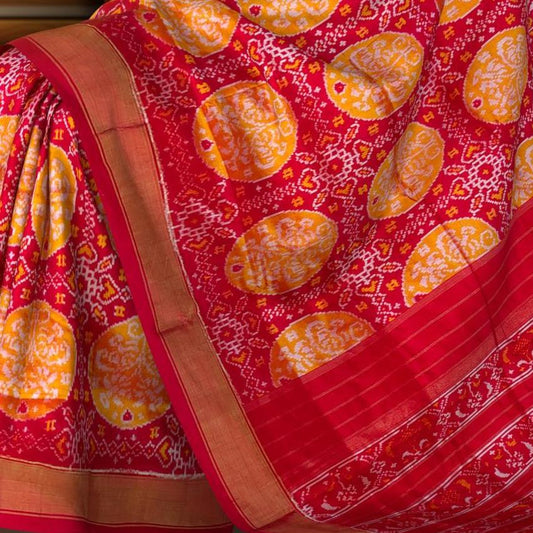

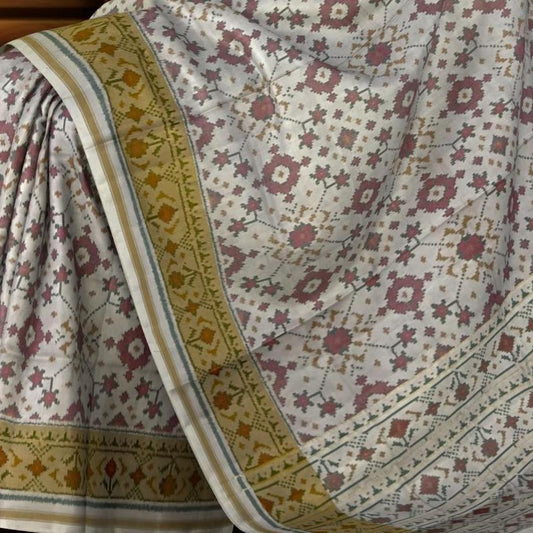
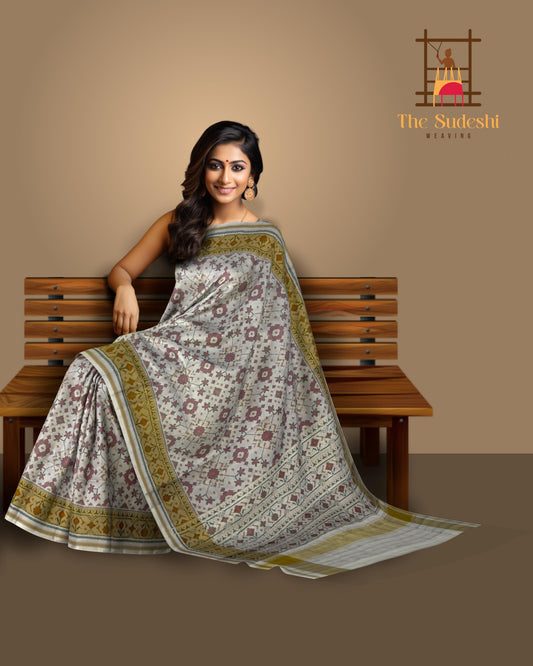
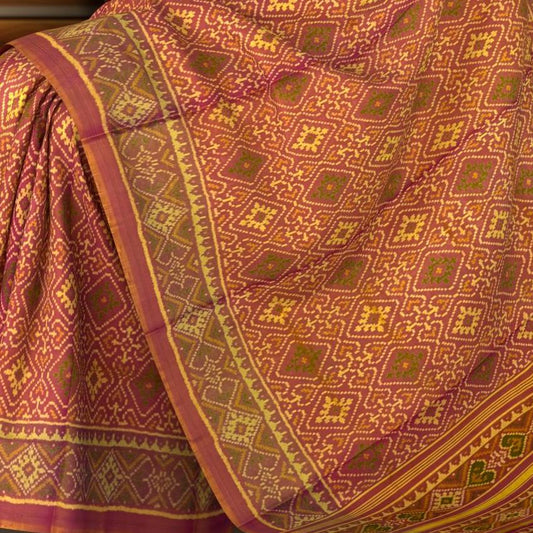
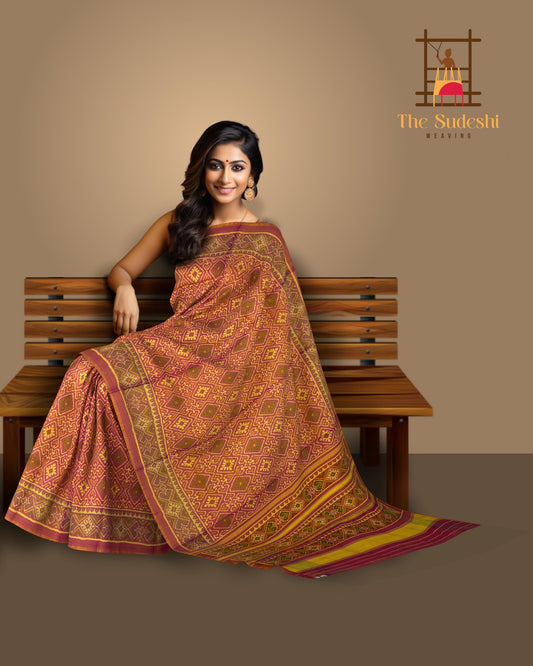
Leave a comment
Please note, comments need to be approved before they are published.